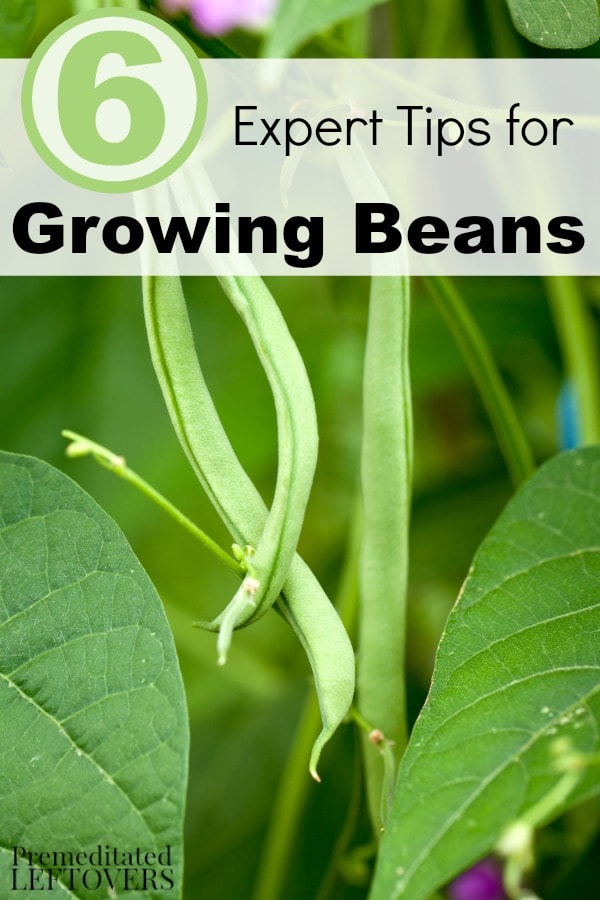Beans are tasty, nutrient-rich, and low-cost recipe ingredients. They also make great beginner crops! They’re pretty easy to grow, produce a lot of beans, and leave the soil full of nitrogen (which most vegetables thrive off of). So if you aren’t growing any beans already, this is the year to start! To help you to succeed, take a look at these 6 Expert Tips for Growing Beans!
6 Expert Tips for Growing Beans
1. There are many different kinds of beans. Not all beans are the same, both in culinary use, flavor, and growing preferences. For example, while most beans like warm temperatures, fava beans prefer colder weather. Also, figure out whether you have pole beans, runner beans, or half-runners. Depending on the type, they may need trellises or stakes for their vines. Choose a variety that can grow well in your region and that will have enough space in your garden. That way, you’ll be able to grow great beans!
2. Water the plants deeply. If you hope to grow beans this year, you’ll want to make sure to keep your bean plants well watered, especially when they’re first planted. Another critical watering time is when the plants are close to blossoming. Try to keep the soil consistently moist. To make this easier, mulch around your plants once they’ve sprouted. The mulch will help the soil retain its moisture. To keep the soil moist longer, also make sure that you’re watering deeply. Not just wetting the surface of the soil.
3. Don’t add nitrogen. With many plants, adding nitrogen is necessary. With beans, it’s usually not. Beans are lucky enough to have beneficial bacteria living on their roots that help them get all the nitrogen they need. So instead of adding more nitrogen to your soil, try to just add some nutrient-rich compost. You can do this before you plant your beans and again in the middle of their growing season. This will help them grow large and tasty beans even faster!
4. Keep watch for disease. Diseases can spread quickly in a garden. Between you touching the plants, insects and animals touching the plants, and the wind blowing foliage and spores about, one infected plant can quickly lead to many infected plants. If you see a diseased plant, you need to get rid of it immediately. Throw it out (not in your compost) and try not to plant any other beans in that area for at least 3 years. To keep the remaining plants safe, use a fungicide, clean your clippers, use clean gloves, and don’t touch the bean plants when they’re wet. That may help the disease spores to spread.
5. Watch out for harmful insects. Your beans have several insect enemies. These include cucumber beetles, spider mites, aphids, and Mexican bean beetles. You may use insecticides to kill some insect pests, or instead opt for natural methods. For example, water mixed with garlic or soap can help prevent spider mites. Row covers can often help prevent insects from getting to your developing bean plants as well.
6. Pick ripe beans frequently. If you want to grow healthy beans, you’ll want to make sure to harvest often from your bean plants when their beans are mature enough. If you leave the beans on the vine, they’ll dry up. This is fine if that’s what you want, but if you didn’t want dried beans you may be in for an unpleasant surprise! So make sure to keep picking beans throughout your plants’ available harvest time, which may last several weeks if you keep picking.
What’s your favorite type of bean?
More Gardening Tips:
10 Tips for Growing Vegetables
10 Most Popular Vegetables to Grow in a Garden
How to Start Square Foot Gardening
Thanks Savanna for sharing your gardening tips!


Leave a Reply